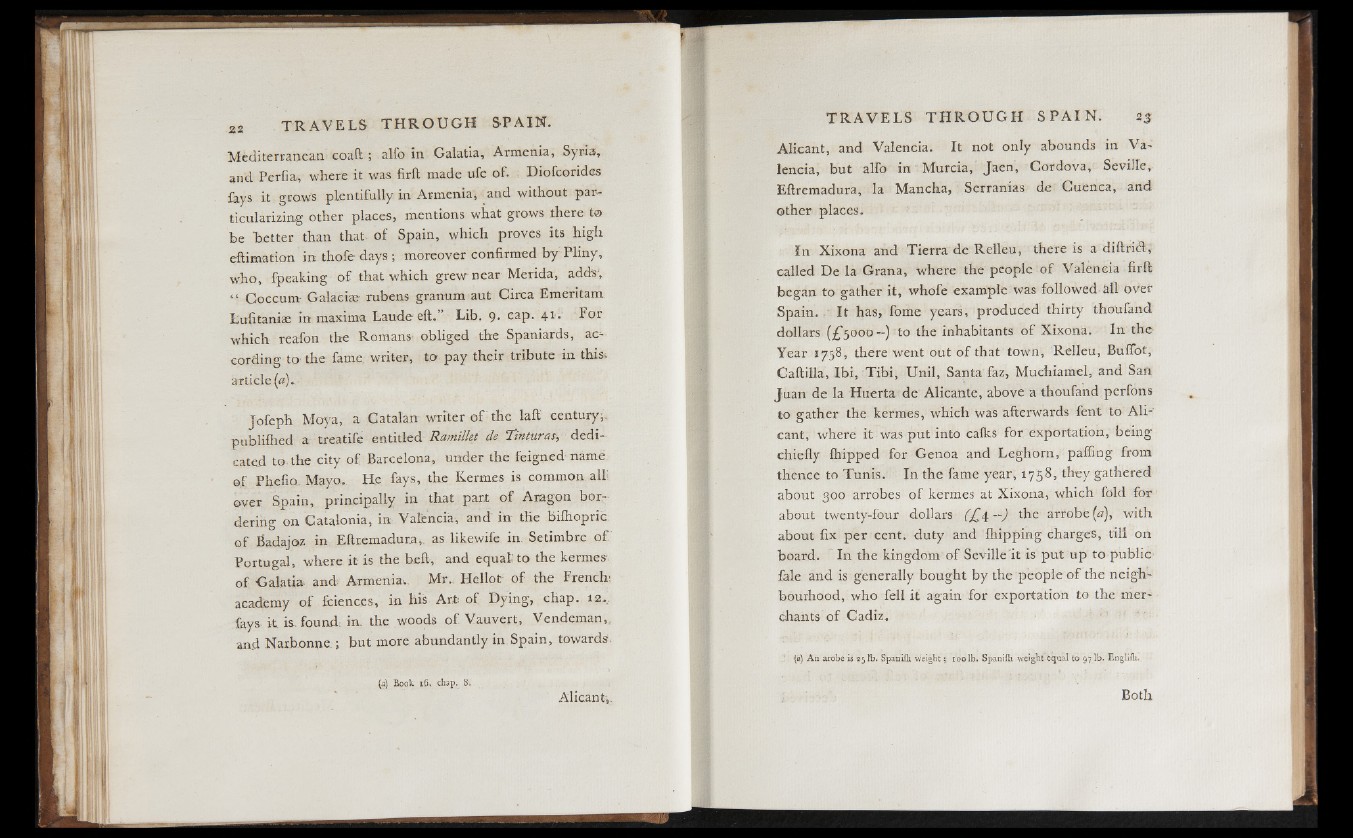
Mediterranean coaft ; alfo in Galatia, Armenia, Syria,
and Perfia, where it was firft made ufe of. Diofcorides
fays it grows plentifully in Armenia, and without particularizing
other places, mentions what grows there t®
be ‘better than that of Spain, which proves its high
eftimation in tho fed a y s ; moreover confirmed by Pliny,
who, fpeaking of that which g r e w near Merida, adds,
“ Coccum Galaciae rubens granum aut Circa Emeritam
Lufitaniae in maxima Laudeeft.” Lib. 9. cap. 41. For
which reafon the Romans obliged the Spaniards, according
to the fame, writer, to pay their tribute in this;
article(«)*.
Jofeph Moya, a Catalan writer of the laft century;,
publiihed a treatife entitled Ramillet de ‘Tinturas, dedicated
to. the city of Barcelona, under the feigned name,
©f Phefio, Mayo. He fays, the Kermes is common alii
over Spain, principally in that part o f Aragon bordering
on Catalonia, in Valencia, and in the bifhopric
o f Badajoz in Eftremadura, as likewife in. Setimbre o f
Portugal, where it* is the heft, and equal, to the kermes*.
of Galatia- and Armenia;. Mr./ Hellot of the French;
academy o f Sciences, in his Art* of Dying, chap. 12.,
fays- it is, found: in. the woods o f Vauvert, Vendeman,,
and Narbonne; but more abundantly in Spain, towards,
(a) Book 16.. chap. 8v
Alicant,
Alicant, and Valencia. It not only abounds in Valencia,
but alfo in Murcia, Jaen, Cordova, Seville,
Eftremadura, la Mancha, Serranias de Cuenca, and
other places.
In Xixona and Tierra de Relleu, there is a diftridt,
called De la Grana, where the people of Valencia firft
began to gather it, whofe example was followed all over
Spain. It has, fome years, produced thirty thoufand
dollars {£3000 ~) to the inhabitants o f Xixona. In the
Year 1758, there went out o f that town, Relleu, Buffot,
Caftilla, Ibi, Tibi, Unil, Santa faz, Muchiamel, and San
Juan de la Huerta de Alicante, above a thoufand perfons
to gather the kermes, which was afterwards fent to Alicant,
where it was put into calks for exportation, being
chiefly Chipped for Genoa and Leghorn, paffing from
thence to Tunis. In the fame year, 1758, they gathered
about 300 arrobes o f kermes at Xixona, which fold for
about twenty-four dollars (£4. - ) the arrobe [a), with
about fix per cent, duty and Chipping charges, till on
board. In the kingdom of Seville it is put up to public
fale and is generally bought by the people of the neighbourhood,
who fell it again for exportation to the merchants
of Cadiz.
(a) An arobe is 25 lb. Spaniih weight; 100lb. Spaniih weight equal to 97 lb. Engliflt.
Both